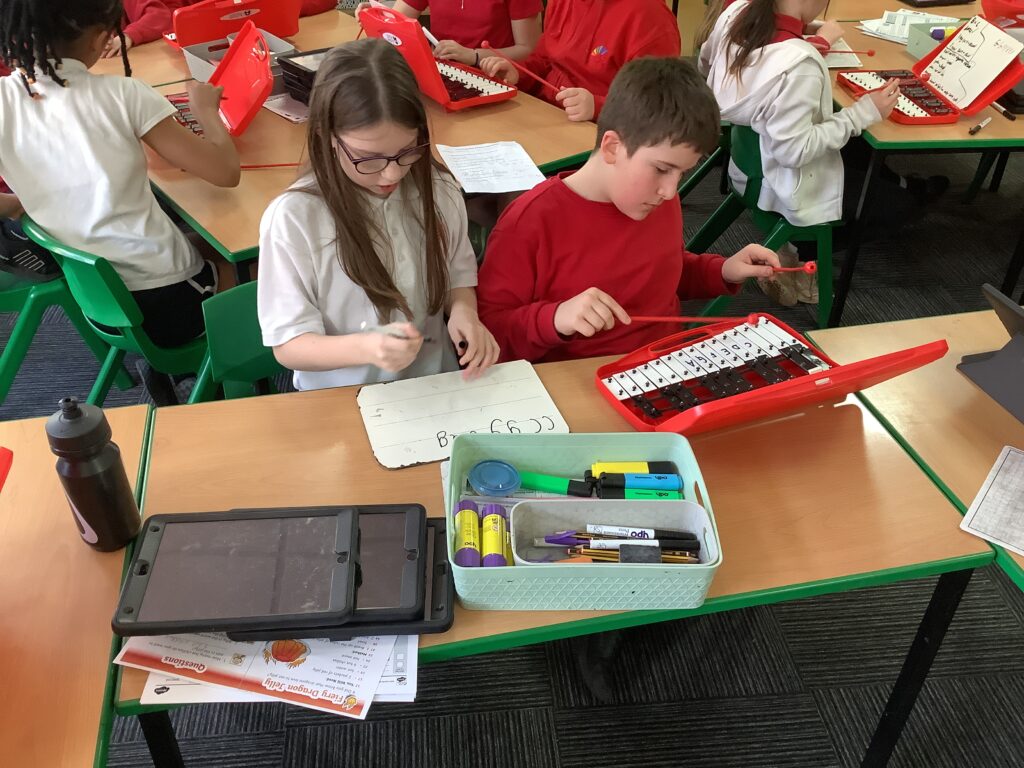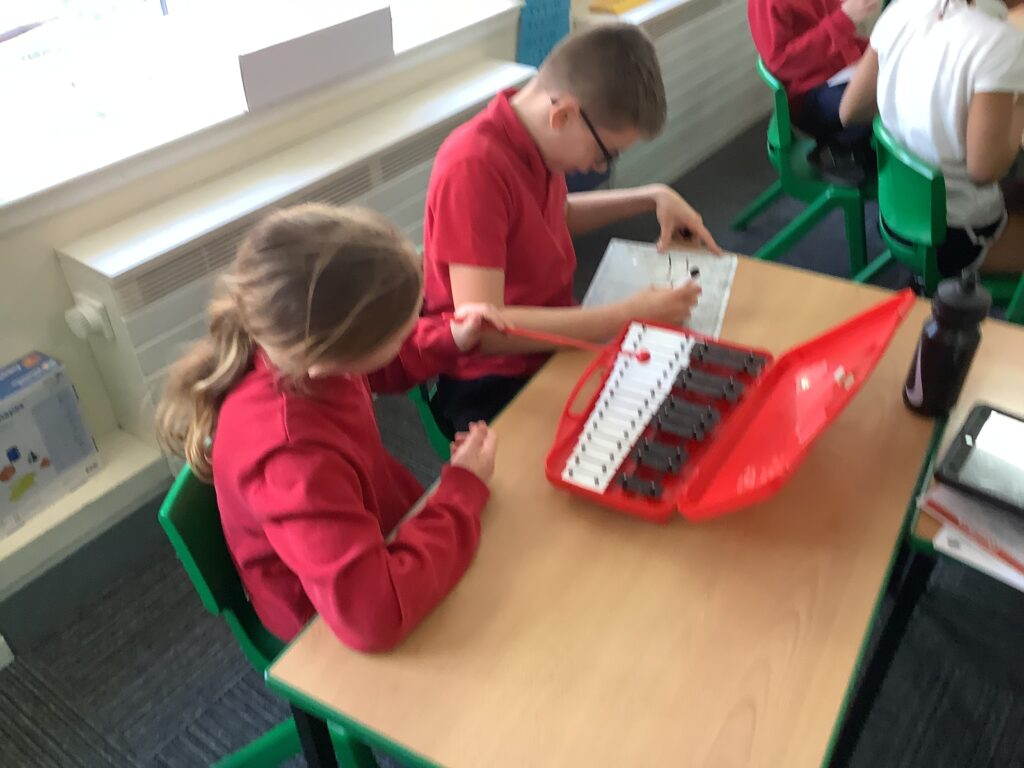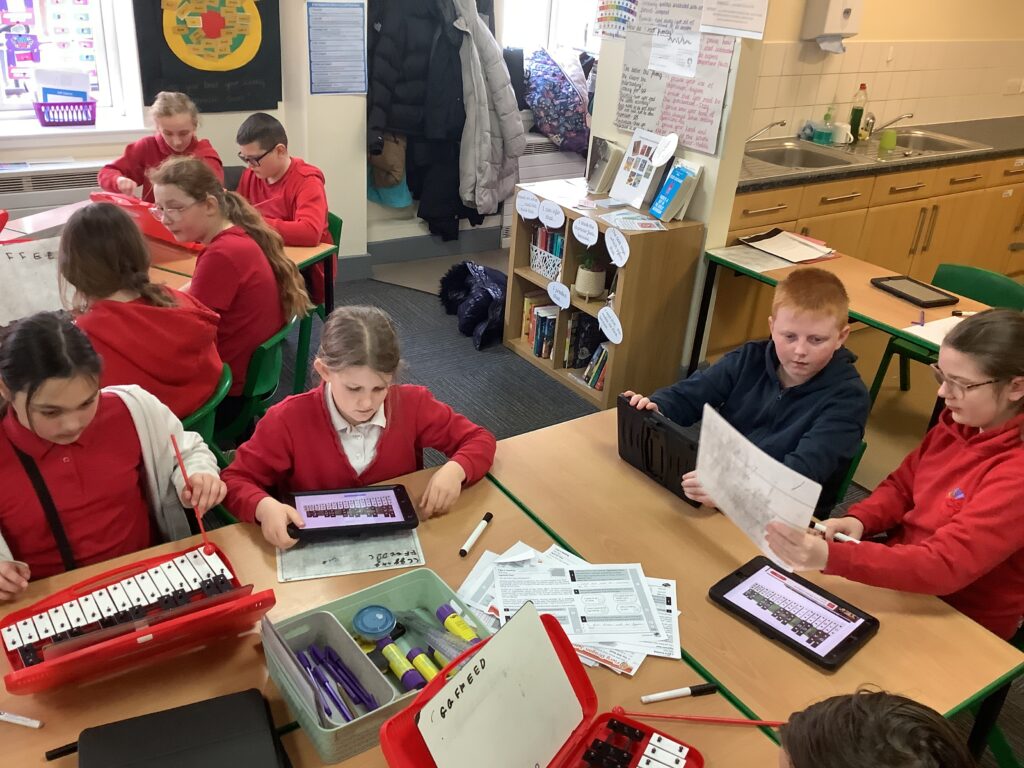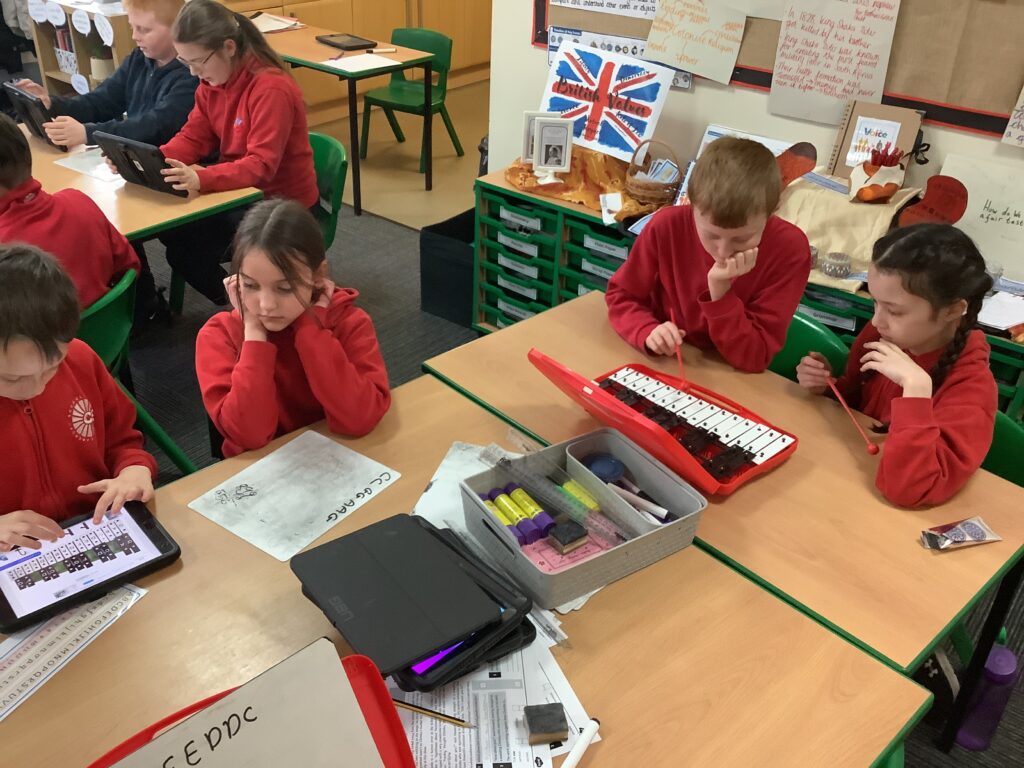Today, we finished our work on ‘Twinkle Variations’. We began by recapping what we had previously discussed around variations and how they can be altered through tempo, rhythm and pitch. We were introduced to passacaglia, which is a repeating bassline and composers often use passacaglia as the basis for their variations. Working with a partner, we chose a short section of ‘Twinkle, twinkle, little star’ to use as the bassline. We spent time perfecting this short section on the glockenspiel.

We then looked at how we could adapt it further. We started by changing the rhythm to make it sound like a happy, dancing passacaglia. We found this quite tricky as it required us to play at a faster tempo and required more notes.

We then looked at adapting the same section, only this time taking away the rhythm and slowing it down to create a more solemn passacaglia. This was easier in terms of the amount of notes, however, it required us to think more carefully about keeping in time and remembering to rest between notes.

Once we had practised different passacaglia options, we split the class into 2 groups. One group played a passacaglia bassline whilst the other group layered an improvised piece. The group who were improvising were allowed to make their own decisions about what they wanted to play, however, they needed to consider fitting in with the bassline, playing at the same speed as the bassline, starting and stopping at the same time, and staying within the correct pitches.





